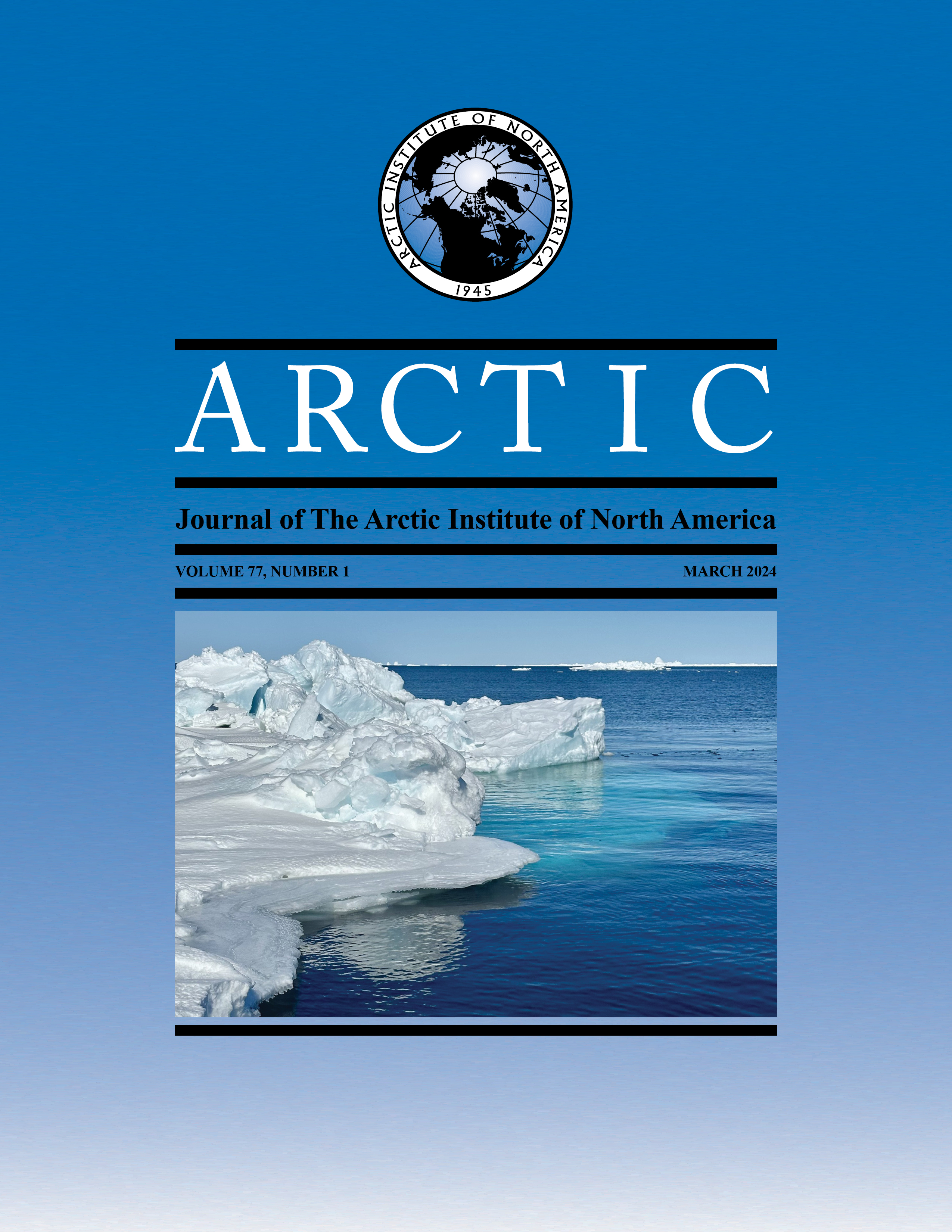Baroclinic Tide Generation at the Dolphin and Union Strait in the Southern Canadian Arctic Archipelago
DOI:
https://doi.org/10.14430/arctic79227Ключевые слова:
Canadian Arctic Archipelago; Kitikmeot Sea; stratification; topography; baroclinic tides; energy flux; energy dissipationАннотация
We studied baroclinic tide generation at the Dolphin and Union Strait, a channel in the southern Canadian Arctic Archipelago that consists of a shallow sill. Utilizing both observational data and numerical simulations, we found that, due to the presence of strong stratification in the summertime, baroclinic tides are generated at both M2 and K1 frequencies as a result of the interaction between the amplified tidal currents and bottom topography. The M2 baroclinic current, which is comparable to the M2 barotropic current in terms of amplitude, is dominated by linear dynamics in the first baroclinic mode. The amplitude of the M2 baroclinic current increases as the strength of stratification increases. In contrast, the K1 baroclinic current has a smaller amplitude in general. Dynamics of the K1 baroclinic current are more complicated, possibly due to nonlinear effects as well as contributions from the higher baroclinic modes. On the other hand, increasing the strength of stratification leads to a noticeable reduction of K1 elevation in the nearby basin, but has a very minor effect on M2 elevation.
Скачивания
Загрузки
Опубликован
Выпуск
Раздел
Лицензия
Copyright (c) 2024 ARCTIC

Это произведение доступно по лицензии Creative Commons «Attribution» («Атрибуция») 4.0 Всемирная.


